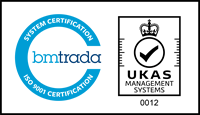News
What are the benefits of personalising total reward statements?
Posted on: Thursday October 21, 2021
Need to know:
-
A total reward statement (TRS) can present a huge amount of information about the employee experience, from salary and bonus to tax and National Insurance savings through benefit schemes.
-
TRSs were traditionally printed but have evolved into digital, real-time accounts.
-
Demonstrating the entire value of an employee’s package can increase engagement and motivation levels, while also boosting take up of benefits.
Total reward statements (TRSs) have long been an important tool for employers to both present employees with an overall picture of their remuneration and employment package, and also to further engage staff with the benefits available through their workplace.
Increasing an individual’s understanding of their employer’s offering can also have a big impact on motivation and productivity levels, while also emphasising the organisation’s culture and values.
Chris Andrew, strategy director at Caburn Hope, says: “If [employers] just show a transactional list of numbers, [they’ve] missed a huge opportunity to engage people. Reward is an enabler for culture, it’s an enabler for driving the right kinds of behaviours, it’s an enabler for purpose and for driving performance. And it only works if people feel emotionally connected to the messaging that [employers are] talking about and make it relevant and meaningful to them as individuals, and total reward statements are a great opportunity to do that.”
Method of delivery
Traditionally, TRSs were delivered once a year, in paper format, perhaps at the end of the financial year or the annual pay review. But with open benefit enrolment windows, or anytime benefits, digital TRSs mean that employees can get a real-time update on their entire employee proposition. Some employers took the decision to move to online-only statements during the Covid-19 (Coronavirus) pandemic, but Andrew notes that there has recently been a resurgence in employees preferring a physical statement or benefit booklet sent to their home address.
“Every organisation is different; some have been working purely remotely, others have been a bit hybrid, others are working where they always were,” Andrew says. “That might mean that for people working remotely an online or desktop-based tool would work. But for people working in the field who aren’t necessarily going to have regular access to a laptop, then you think about making things mobile optimised, or other ways of getting that information across.”
Personalisation
The evolution of statements has also seen the ability to offer truly personalised information, breaking down the components and assigning a monetary value so that employees can see the total investment from their employer.
“[Employers] are looking to paint a very clear picture to their employees to illustrate what they receive on top of their base salary,” says Simon Keeping, consultant and project manager at Edenred. “But at the heart of it is, what else [they] receive, be it life assurance, or paid-for travel.”
Personalised TRSs will include information about the employee’s role and responsibilities and length of service, for example, and of course base salary, bonus and commission information. And then over and above this, it will include benefits that have a monetary value such as private medical insurance, health cash plans, group risk benefits and pension scheme contributions.
Employers can go further and include the benefits that perhaps don’t have a clear value, but do have a cost-saving for the employee such as company car schemes or discounts through voluntary benefits schemes. “Through a flexible benefits platform, for example, [employees] might enrol in some benefits which will drive a cost saving, they might take up a green car scheme, or [bikes-for-work] scheme, and there are some direct tax or National Insurance savings,” says Charles Ashwell, director at Personal Group. “So how is that information presented as a value? There could be an [employee] who is a good user of a retail gift card scheme who could be saving £300 pounds a year. It’s about making sure that we take that information and present it in dynamic way that is accessible and understandable.”
A thought for employers that have implemented home or hybrid working policies is how to promote these on a TRS. “The market recognises that the needs of the employee have changed,” says Ashwell. “We are all becoming more aware of flexible working and what we want from the employer relationship. But how is that captured on a TRS?”
Article published on Employee Benefits on 21st October 2021
Personal Group Appoints Helen Tinnelly as Chief Commercial Officer
Personal Group has strengthened its Senior Leadership Team with the appointment of Helen Tinnelly as Chief Commercial Officer. A dynamic commercial leader with over 20 years of experience, Helen specialises in strategy, product development, and digital...
Posted on: 12 February 2025 by Sarah Wootton
Personal Group Welcomes Arianne Riddell as Chief Sales Officer
Personal Group is thrilled to announce the appointment of Arianne Riddell as Chief Sales Officer. Arianne is a seasoned commercial leader with a stellar track record of driving sales growth and strategic innovation across technology, media,...
Posted on: 12 February 2025 by Sarah Wootton
Personal Group Named Finalist in Two Categories at MKBAA 2025
Personal Group is proud to announce its selection as a finalist in the esteemed Milton Keynes Business Achievement Awards (MKBAA) 2025, competing in the categories of 'Innovation and Technology' and 'Customer Service.' This year’s awards theme,...
Posted on: 12 February 2025 by Sarah Wootton






